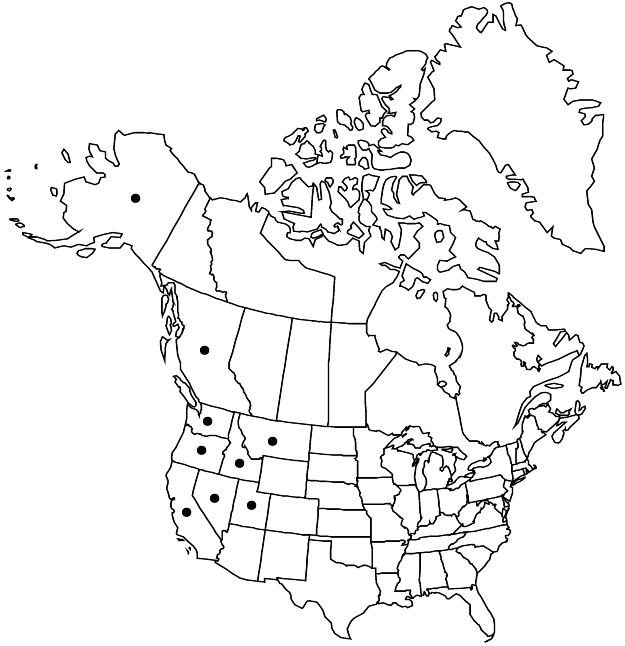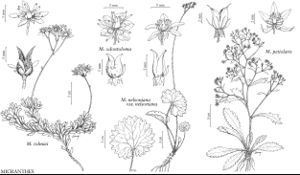Micranthes tolmiei
J. Bot. Res. Inst. Texas 1: 1022. 2007 ,.
Plants mat-forming, (stems trailing, thin, basally slightly woody), with slender, woody caudices. Leaves cauline, proximally crowded; petiole absent; blade elliptic-obovate, 0.8–1.5 cm, fleshy, base cuneate, margins entire, sometimes proximally sparsely long-ciliate, surfaces glabrous. Inflorescences 2–10-flowered, lax cymes, sometimes solitary flowers, 3–12 cm, glabrous or purplish- or pink-tipped stipitate-glandular; (bracts 1–3, proximal). Flowers: sepals erect to spreading, ovate; petals white, not spotted, linear to oblanceolate, 2.5–5 mm, longer than sepals, short- or not clawed; filaments broadly club-shaped (± petaloid); pistils connate to 1/2 their lengths; ovary ± superior (to 1/4 adnate to hypanthium). Capsules green, purple mottled, valvate. 2n = 30.
Phenology: Flowering summer.
Habitat: Arctic and alpine tundra, fell-fields
Elevation: 500-4000 m
Distribution

B.C., Alaska, Calif., Idaho, Mont., Nev., Oreg., Utah, Wash.
Discussion
Unlike those of most Micranthes species, the leaves of M. tolmiei are proximally cauline and the ovules have two integuments. The seeds have a loose, winglike testa.
Selected References
None.
